Tourist Attraction Development Strategy Of Al Munawar Arab Village, Palembang
on
p-ISSN: 2338-8811, e-ISSN: 2548-8937
Jurnal Destinasi Pariwisata Vol. 10 No 1, 2022
Tourist Attraction Development Strategy Of Al Munawar Arab Village, Palembang
Mega Nurintan Kusumawardhani 1,a Enny Mulyantari2,a, Heni Susilowati 3,a, Yeni Rosilawati4b
1 megankusumawardhani@gmail.com, 2ennymulyantari@yahoo.co.id3 heni.sw62@gmail.com 4yenirosilawati@gmail.com a Tourism Department, Sekolah Tinggi Pariwisata AMPTA, Yogyakarta
b Communication Department, Universitas Muhammadiyah, Yogyakarta
ABSTRACT
This research aims to determine the development strategy of Al Munawar Arab Village as a tourist attraction in Palembang City. Al Munawar Arab Village can be developed because of the diversity of attractions it has, some of which are eight buildings included in the cultural heritage, Arab ethnic culture, and religious activities. However, the managers have not applied a good strategy for developing tourist areas, as seen from the decline in tourist visits from time to time. This study used a mixed-method combining quantitative and qualitative data input at the same time. The resulting quantitative analysis was the value of weighted, rating, and attractiveness scores. In contrast, the qualitative analysis was the external and internal environment, the interpretation of scores on the EFAS, IFAS, and IE matrix, and SWOT. The SWOT analysis utilized three essential elements of tourism products: attractions, amenities, and accessibility. Based on the EFAS matrix, the enormous opportunity in functional attraction development was the availability of floating docks for further development with a weighted score of 0.380. Moreover, the biggest threat was similar tourist areas which were more attractive with a weighted score of 0.140. The IFAS matrix revealed that the greatest strength in the functional development of tensile data was the eight buildings included in the cultural heritage, with a weighted score of 0.260. In comparison, the biggest weakness was the lack of human resources in the development of tourist areas, having a weighted score of 0.053. The total weight score for EFAS and IFAS was 2.710 and 2.840, respectively, which were in the average position. Based on the weighted score, the functional position of developing tourist attractions in Al Munawar Arab Village was in cell V, hold and maintain. The strategies used were market penetration and product development.
Keywords: Development Strategy, Tourist Attraction
-
I. INTRODUCTION
Palembang is the second-largest city in Sumatra after Medan, founded in 682 AD, and is the oldest city in Indonesia. It has an area of 400.61 km2 inhabited by 1.7 million people with a population density of 4,800 per km2. The history of Palembang, which was once the capital of the largest Buddhist maritime kingdom in Southeast Asia, named the Srivijaya Kingdom, which dominated the archipelago and the Malay Peninsula in the ninth century, made this city known as the “Bumi Sriwijaya” (Source: www.palembang.go.id). Cultural diversity makes this city one of the cultural cities in Indonesia besides Yogyakarta. It is evidenced by the many cultural tours/historical sites in this city. Cultural tourism is not solely in the form of temples and palaces. Tourism village can also be one of the cultural attractions since it sells cultural and social values from the community, one of which is Al Munawar Arab Village in Palembang.
Al Munawar Arab Village is an ethnic Arab settlement located in 13 Ulu Village, Seberang Ulu II District, Palembang City. This village is called Al Munawar because most of the people living here are from the Al Munawar tribe. Based on its geographical location, Al Munawar Village is located in the west of the Kangkang River. This area shows the old settlement patterns marked by open spaces
(fields) in the middle of the settlements, and in the surroundings, there are houses with traditional and Indies architecture, called the High House, Land House, Middle House, Stone House, and Stone Twin House. There is also a Sea House on the banks of the Musi River and to the east of the Ketemanggungan River. The houses in this area are hundreds of years old. Eight of the 17 old houses in this village are included in the cultural heritage. According to the Law of the Republic of Indonesia, Number 11 of 2010, Cultural Conservation is a material cultural heritage in objects, structures, buildings, sites, and areas. Therefore, the Al Munawar Arab Village area is one of the heritage tours (Source: cagarbudaya.kemdikbud.go.id).
In addition to the pattern of settlements and houses depicting the old architecture, Al Munawar Arab Village also demonstrates religious and cultural traditions that most other tribes in Palembang do not practice. With the originality of culture and religion it owns, the Governor of South Sumatra in 2016 determined this village as one of the tourist attractions in Palembang, with two types of attractions: heritage and religious attractions. It is carried out by the Culture and Tourism Office of South Sumatra Province together with the Palembang City Tourism Office by bringing a
Vol. 10 No 1, 2022
delegation of three Palembang inbound travel agents: Mubawisata, Media Tour, and GH Mulia to participate in the direct promotion of Palembang city tour packages under the auspices of the Indonesian Ministry of Tourism pavilion in the most extensive exhibition event in Malaysia, MATTA FAIR on March 16-18, 2018 (Source: www.palembang-tourism.com). Al Munawar Arab Village provides typical culinary origins from its area, such as bath rice, chicken curry, goat curry, vegetable salad with peanut sauce, and peanut sauce. Moreover, this village also has a traditional art named gambus performed when certain events occur.
The Provincial Government designates this area as one of the heritage and religious tourism destinations. Furthermore, Islamic religious activities routinely held in this village led the South Sumatra Research and Development Center for Regional Innovation (Balitbangnovda) to designate this village as the destination for the Santri Village in 2016. According to Ale (2018), as one of the stakeholders in Al Munawar Arab Village, the initial development carried out by the government with the help of the community was quite good, judging from the arrangement of villages and residents’ houses painted in more attractive colors than before. The promotion strategy has been directly assisted by the Culture and Tourism Office of South Sumatra Province, the Palembang City Tourism Office. Even the Indonesian Ministry of Tourism also participates in marketing this village through the kemenpar.go.id website.
Every business in the tourism sector requires several strategies that must be carried out to support the quality of tourist destinations to make this tourist area always one of the tourists’ objects of interest. The quality of tourism objects must be interdependent such as attractions, facilities, infrastructure, transportation, and services. According to Muljadi (2014: 102), in tourism activities, there are three crucial aspects of tourist attractions: attractions, amenities, and accessibility (3A). Therefore, the 3A analysis is essential in determining the tourism area development strategy.
Following the 3A observation results, several obstacles occur in Al Munawar Arab Village, particularly in its development and management. The problems are (1) The community is still closed to tourism, resulting in a lack of human resources for the development of tourist areas, (2) Potential that has not been appropriately utilized, (3) The lack of activities that tourists can perform, and (4) The level of tourist visits experiencing instability.
Concerning the development of heritage and religious tourism in Al Munawar Arab Village, a SWOT analysis was utilized to measure how the managers develop a tourist attraction strategy.
According to Rangkuti (2009: 3), strategy is
a tool to achieve goals, and the main goal is to objectively see internal and external conditions so that companies can inspire their external environment. Siagian (2016: 29) also stated that strategy is a series of fundamental decisions and actions made by top management and implemented by all levels of an organization to achieve the goals of the organization. According to Basu (2007: 67), strategic planning is a plan prioritized to achieve goals. Several companies may have the same goals, but the strategies to achieve these goals are different.
Reinforced by Rangkuti (2005: 3-4),
strategic planning is the implementation of the basic long-term goals of the company and the determination of the allocation of resources essential to carry out these goals. Strategic planning is also a process of selecting organizational goals, determining the strategies, policies, and strategic programs required for these goals. In planning these strategies, the concept of the company becomes transparent; thus, it will be easier to formulate goals and other plans. In other words, strategic planning will determine the success of an organization or company. Strategic planning is directly related to change management. It has been proven that strategic planning is a series of processes that promotes innovation for change for the better. If a strategic step innovation does not follow the change, it might fail.
According to Philip Kotler and Fox in (Yoeti, 2005: 35), the formulation of a strategy must be based on and guided by: environmental analysis, resources analysis, and goal formulation step. Therefore, it can be interpreted as follows:
-
1) Analyzing the tourism industry group companies carried out at PT Madubaru regarding whether the strategy adopted is correct
-
2) Performing strategic planning concerning local government policies on tourism development
-
3) Determining the regional tourism development strategy concerns all consumer needs.
Tourism development has the character of multi-sectoral activities. In carrying out tourism development, it must be planned in an integrated manner with considerations of economic, sociocultural, physical, and political environments (Prayogi. 2011: 66). Tourism development is one of the efforts to promote the attractiveness of a new tourist attraction to develop following the vision and mission. The development of tourism should not be separated from the direction of the development of Indonesian national culture. In other words, it is in this national situation that the foundation for tourism development policies should lie. The Ministry of Culture and Tourism of the
Vol. 10 No 1, 2022
Republic of Indonesia stated as its vision that cultural development must improve civilization and national unity and increase friendship between countries. The development of tourism will also positively impact increasing foreign exchange and original income for the tourist area (Patris Gisau Biduan, 2016: 6).
According to Angga Pradika (2013: 21), tourism development has three functions or tri-functions, namely:
-
1) Promoting economic activity
-
2) Maintaining the nation’s personality and the preservation of environmental functions
-
3) Enhancing a sense of love for the homeland and nation and instilling the soul, spirit, and final noble values of the nation in strengthening national unity and integrity
To achieve the tri-function, three kinds of efforts must be taken, namely (Angga Pradika, 2013: 21):
-
1) Developing tourist attraction objects
-
2) Improving and developing promotion and marketing
-
3) Improving tourism education and training
To make a tourist destination exist and always be the main tourist attraction, all the supporting factors must be equipped and well maintained. Therefore, the development of tourist attraction destinations in natural, cultural, or artificial and supporting facilities must be carried out as well as possible and integrated. If a tourist destination can make tourists visit and feel at home to travel at that location, it will significantly contribute to improving the economy of the community in the area.
According to Sinaga (2010: 45), the tourist attraction is an essential element in tourism. Objects and tourist attractions can succeed the government’s program in preserving the nation’s customs and culture as assets that can be sold to tourists. Tourist objects and attractions can be in nature, culture, way of life, and so on, which have attractiveness and selling points to be visited or enjoyed by tourists. Therefore, anything with a tourist attraction or attracts tourists can be called an object and a tourist attraction.
Based on Tourism Law Number 10 of 2009, a tourist attraction is described as anything that has uniqueness, beauty, and value in the form of a diversity of natural wealth, culture, and artificial products targeted or visited by tourists. Furthermore, according to Oka A. Yoeti Muljadi AJ (2012: 9), a tourist attraction to be sold must have three conditions to provide satisfaction to tourists or visitors, namely what can be seen (something to
see), what can be done (something to do ), and what can be bought (something to buy).
According to I Gusti Bagus Rai Utama (2016: 144), tourism can be distinguished according to the motives of tourists to visit a place. The types of tourism are cultural, maritime or marine, nature reserve, convention, agricultural, hunting, and pilgrimage. Muljadi (2014: 102) mentioned that, in tourism activities, there are three essential aspects of tourist attractions that need attention, namely:
Attractions attract interest for tourists and encourage them to come to tourist destinations. These attractive properties include natural beauty, attractions, culture, historical heritage buildings, and customs or habits of the people’s way of life having a uniqueness different from the place of residence of tourists.
Accessibility is the ease of reaching tourist destinations with various modes of transportation, both air, sea, and land. The study results have proven that accessibility greatly influences the decision of potential tourists to come to visit a country or tourist destination.
Amenities are the availability of various facilities that can comfort tourists while traveling in a tourist destination. The facilities in question are information services, tour guides, local community attitudes, public facilities, and comfort facilities.
These three aspects (3A) can be packaged in such a way that they can be more attractive and provide comfort for tourists according to the purpose of their visit.
In this research, the authors focus on the development strategy of the Al Munawar Arab Village, specifically on: 1) How is the analysis of attractions, amenities, accessibility (3A) on Al Munawar Arab Village?; and 2) What is the strategy for developing tourist attractions in Al Munawar Arab Village carried out by the managers?
This study focuses on discovering the development strategy as a variable, and some indicators will make the research more focused.
This research utilized a case study method (an observational case study) with a quantitative approach combining both qualitative and quantitative data input (mix method). The authors moved from a case study producing qualitative data
Jurnal Destinasi Pariwisata Vol. 10 No 1, 2022
input (human perception) with the help of a questionnaire. However, the qualitative data were processed into quantitative data using the EFAS and IFAS matrices and SWOT analysis. The analysis results were then summarized through the elaboration of the qualitative analysis results.
According to Rangkuti (2014: 19), SWOT analysis identifies various factors to formulate a company strategy. This analysis is based on the logic that can maximize strengths and opportunities and minimize weaknesses and threats. The strategic decision-making process is always related to developing the company’s missions, goals, strategies, and policies. Thus, the strategic planner must analyze the company’s strategic factors (strengths, weaknesses, opportunities, and threats) in the current conditions. Hence, it is called situation analysis. The most popular model for situation analysis is the SWOT analysis. In this study, the authors aimed to discover a strategy for developing a tourist attraction carried out by the managers and community of Al Munawar Arab Village.
SWOT analysis compared the external factors of opportunities and threats with the internal factors of strengths and weaknesses. Internal factors were entered into a matrix called the internal strategic factor matrix or IFAS (Internal Strategic Factor Analysis Summary). External factors were entered into a matrix called the EFAS (External Strategic Factor Analysis Summary). After the internal and external strategy factor matrices had been compiled, the results were entered in a quantitative model called the IE matrix to formulate strategy.
The research was conducted in Al Munawar Arab Village in Palembang. The research process was carried out for six months, from January to June 2019. Several parties became the source of information for this study, comprising the managers, the community of the Al Munawar Arab Village tourist area, and tourists visiting the area. Sources of data used were primary and secondary data. Primary data referred to original data obtained from the first data or directly through observation, questionnaires, and interviews. Secondary data were data in books, journals, theses, documentation, and other related references.
Al Munawar Arab Village is managed by the South Sumatra Province Culture and Tourism Office and the Palembang City Tourism Office. The Provincial Culture and Tourism Office specifically manages and protects cultural heritage, namely traditional houses in the village. There are 25 houses in this area, eight of which are included in the Cultural Heritage, namely the High House, Land House, Middle House, Stone House, Stone Twin
House, and Sea Twin House, located separately and are on the banks of the Musi River and east of the Ketemanggungan River (at the mouth of the river). The houses are hundreds of years old, as evidenced by the Hijri year number “٦٠٢١” (1792 AD) at the top of the window frames in the High House.
In addition to the pattern of settlements and houses depicting the old architecture, Al Munawar Arab Village also shows religious and cultural traditions that most other tribes in Palembang do not practice. In the early 2000s, Al Munawar Arab Village was threatened by the government’s plan to build the Musi III Bridge. To maintain the existence of the village from eviction efforts, the community was assisted by several nongovernmental organizations and conservationists of history and cultural heritage. Moreover, various efforts were made to thwart the government in building bridges. This effort was successful, and the existence of the Al Munawar Arab Village could still be witnessed today.
After successfully defending the village, the community wanted to develop this area. However, their efforts were unsuccessful until, in 2016, the provincial government, through the Department of Culture and Tourism of the Province of South Sumatra, attempted to revitalize this area to become one of the tourist attractions in Palembang to support the 2018 ASIAN GAMES. However, the revitalization process was limited to physical development and has not yet been completed. Moreover, it touches on cultural aspects and other crucial values, which are the uniqueness and characteristics of Al Munawar Arab Village as a historical area or cultural heritage area.
Al Munawar Arab Village is protected by the provincial government and the central government with eight cultural heritage buildings. However, the cultural values or the Arab ethnic community in Al Munawar Arab Village have not received special protection from the provincial government, and they protect the Arab ethnicity through marriage customs (Source: an interview with RT Head in July 2019).
Identification of the External Environment Development of the Attractiveness of Al Munawar Arab Village
Marketing Intermediaries
Analysis of marketing intermediaries was conducted by seeking information about what intermediaries were used to promote the tourist attraction of Al Munawar Arab Village. It did not have personal social media because it was considered sufficient with the web from the Provincial Culture and Tourism Office, City Tourism Office, and TIC. Therefore, efforts to procure events and promotions through concrete actions such as collaborating with schools to hold Al Munawar Arab
Vol. 10 No 1, 2022
Village activities could be carried out to increase this attraction. Hence, it was visited by many tourists and participated in the annual festival called the Sriwijaya Festival held in Kuto Besak Fort by setting up a stand with a tourism concept based on culture and religion.
-
a. Tourists
Tourists have an essential role in developing a tourist area. They bring both positive and negative to an attraction that will automatically impact the attraction visited— for example, tourists who do not comply with the rules that the managers have made. According to the study results, tourists who came to Al Munawar Arab Village with open clothes borrowed sarongs at no additional cost.
-
b. Competitors
Competitors who influenced the development and marketing of Al Munawar Arab Village were those offering similar products and having a more attractive appeal. An interview with Mr. Muhammad, the Chair of Neighborhood Association (RT) 24 as well as the Deputy Chair of the Tourism Awareness Group of the Al Munawar Arab Village, on March 6, 2019, revealed that:
“There is a tourist area similar to Al Munawar Arab Village called Kapitan Village. It is a Chinese village that offers the history of Chinese ethnic culture and its old buildings and culinary tours, encouraging many people to come there with a restaurant atmosphere on the banks of the Musi River.”
Identification of the Internal Environment Development of the Attractiveness of Al Munawar Arab Village
-
a. Consumer Analysis
An interview with the Deputy Chair of the Tourism Awareness Group of Arab Al Munawar Village revealed that consumer analysis was carried out by focusing on market segmentation and what experiences could be felt by tourists.
-
1) Tourist Segmentation
The segmentation applied by the managers of Al Munawar Arab Village was based on education and tourist type. The segment at the level of tourist education included elementary, junior high, vocational/high school, and higher education. The segment based on the tourist type was psychometric tourists, tourists who prefer familiar places.
-
2) Tourist Experiences
Tourist experiences during visits to tourist attractions can have both good
and bad impacts. If tourists feel dissatisfied, they will think again to revisit the place and switch to other tourist attractions. Conversely, if the impression is good, they can recommend it for their loved ones to visit.
The managers strived to create a quality tourist experience to satisfy tourists after visiting the Al Munawar Arab Village. The managers held traditional arts to welcome tourists coming in groups and served traditional food according to what tourists previously ordered before visiting. Therefore, it could provide an interesting experience for tourists. However, it only applied to tourists coming in groups.
Identification of Attractions, Amenities, and Accessibility (3A) Development of the Attractiveness of Al Munawar Arab Village
The development of tourism objects has been the main focus of the Palembang Government. Three crucial components must be considered in tourism development: attractions, amenities, and accessibility. Furthermore, these three components must be sustainable so that tourism objects can have high competitiveness. The tourism attraction development strategy is as follows:
-
a. Attractions
Attractions are one of the essential components in supporting the growth and development of a tourism destination. Al Munawar Arab Village has two types of tourist attractions: heritage and religion. The observation revealed that the heritage attractions are depicted from several buildings in this area, which are the relics of Habib Abdurrahman Al Munawar 200-300 years ago, traditional arts in the form of gambus performed by men, Middle Eastern specialties, traditional arts, and wedding customs.
The following pictures are the conditions of eight houses of the cultural heritage before and after the restoration:
High House High House After
Before Restoration Restoration
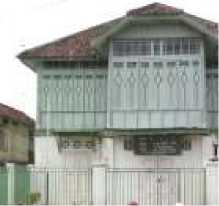
Greenhouse Before Restoration
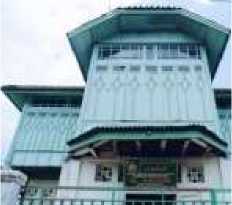
Greenhouse After Restoration
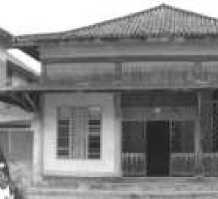
Stone House Before
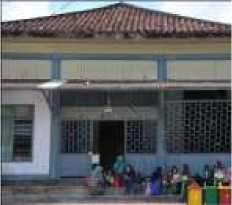
Stone House After
Restoration
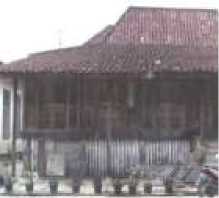
Restoration
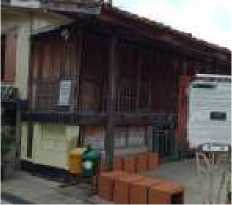
Limas House After Restoration
Limas House Before Restoration
The following are typical foods and traditional arts held only at certain times:
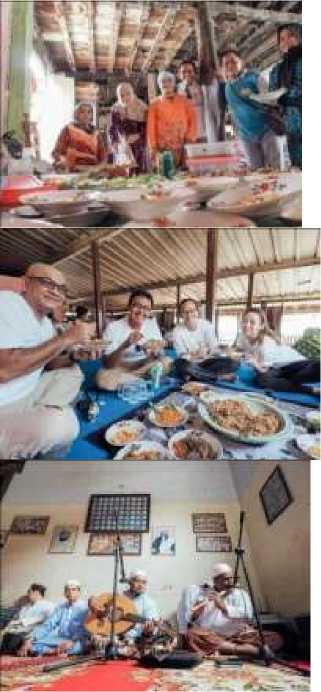
Figure 2: Speech from the people of Al Munawar Arab Village to a tourist group from Jakarta
(Source: Research Documentation)
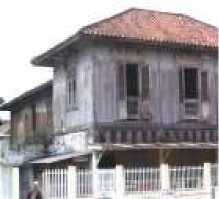
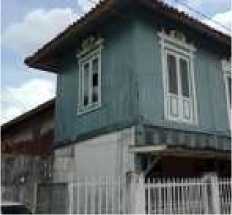
Land Twin House After
Land Twin House Before Restoration
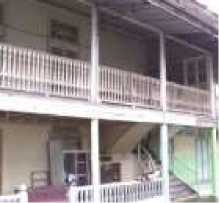
Sea Twin House Before Restoration
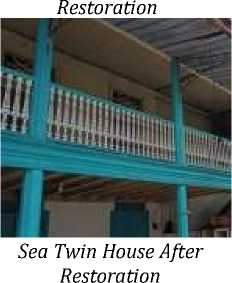
Picture 1. Conditions of Cultural Heritage Houses Before and After Restoration (Source: Research Documentation)
Religious attractions cannot be separated from religious activities carried out by the people of Al Munawar Arab Village, essential things in everyday life. According to the interview with a community leader, the Head of the RT in Al Munawar Arab Village, many religious activities were held in the village, such as Haul, Maulid Nabi, and Arba’in 40 nights, held regularly every year. Arbain, the Arab population went around paying tribute to the residents’ houses. After the Arbain event, all people in Palembang, be it Chinese, Malay, Arabic and Indian, were essentially open to the public. Therefore, all levels of society could take part in the annual event. Moreover, there was also Isrin-20-night reserved for Arab citizens, only close relatives of the same blood, aiming to strengthen friendships.
Jurnal Destinasi Pariwisata Vol. 10 No 1, 2022
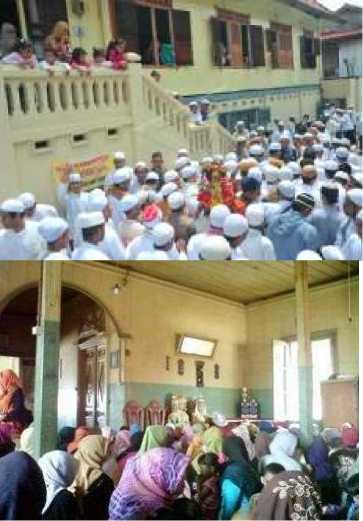
Figure 3: Wedding Ceremony in Al
Munawar Arab Village
(Source: Research Documentation)
There also existed a mass event held a few days before the holy month of Ramadhan. It was a large mass festival because the entire community took part in it, carried out in the village field since 2015. Funds for this ruahan only came from nongovernmental organizations. The third event was the assembly (study) held by the community every Monday afternoon. Al Munawar Arab Village has Madrasah Ibtidaiyah Al Kautsar, equivalent to an Elementary School, where teaching and learning activities occurred every Monday, Tuesday, Wednesday, Thursday, and Saturday.
|
No |
Response |
Total |
Percentage (%) |
|
1 |
House buildings, culture, religious activities |
25 |
83 |
|
2 |
Cultural and religious activities |
5 |
17 |
|
TOTAL |
30 |
100 | |
Table 2
Tourist Interview Data Related to Attractions
(Source: Research Analysis)
The statements above also follow the interview results with tourists about “what are the characteristics of Al Munawar Arab Village” from 30 visitors; 25 said that the tourist attractions in Al Munawar Arab Village were the house
buildings, Arab ethnic culture, and religious activities. Five other visitors stated that the tourist attractions were only Arab ethnic culture and religious activities, while house buildings were considered similar to limas house buildings in general. The interview results also disclosed that tourists also mentioned that the people in Arab Village were unfriendly because there was still a lack of public awareness about tourism. Thus, the attractions of the Al Munawar Arab Village were not packaged optimally.
-
b. Amenities
Tourist facilities support the creation of tourist comfort to uphold a tourist destination. The essential facilities related to tourism development include hotel accommodation, restaurants, clean water, communication, entertainment, security. Supporting facilities for tourism activities in Al Munawar Arab Village were quite good, such as the condition of clean and suitable public toilets, procurement of trash cans in every corner of the village, collaboration with the SU II Police Chief for security, and new facilities to support tourism activities in this tourist village, in the form of a jetty, only operated on March 4, 2019. The observation uncovered that the facilities in this area were quite good. However, accommodations, souvenir shops, places for people to sell were unavailable.
|
No |
Response |
Total |
Percentage (%) |
|
1 |
There was nothing to take home yet |
20 |
67 |
|
2 |
It was fine with not having anything to take home |
10 |
33 |
|
TOTAL |
30 |
100 | |
Table 3 Tourist Interview Data Related to Amenities
(Source: Data Analysis )
Likewise, based on interviews with 30 tourists, 20 mentioned that there was nothing they could take home, while ten others felt that there was no problem with the unavailability of something to take home.
-
c. Accessibility
Many tourism activities depend on transportation and communication. The critical factor of distance and time in accessibility is transportation. The frequency with which speed is used can make the distance seem close. In addition
Jurnal Destinasi Pariwisata Vol. 10 No 1, 2022
to transportation regarding accessibility, infrastructure includes roads, bridges, terminals, stations, and airports. This infrastructure serves to connect one place to another. Therefore, transportation infrastructure will affect the rate of transportation. The accessibility of Al Munawar Arab Village was relatively smooth, supported by proper road
conditions to the location and air transportation facilities. The interview results with the Chairperson of the Tourism Awareness Group, Ahmad Masawa, are as follows:
“Access to Al Munawar Arab Village is good and smooth. Usually, tourists coming here by land, rarely by the river because land routes are easily accessible. For example, from the airport, you can directly take the Integrated Railroad (LRT) for approximately 40 minutes, then get off at Ampera Station, or take the Trans Musi bus for approximately one hour, from there you can take public transportation or online motorcycle taxis for about ten minutes. You can take the Trans Musi bus for approximately 1.5 hours to Ampera or take online motorcycle taxis from the station. Thus, access is highly open, in terms of other supporting infrastructure such as telecommunications, it is excellent because the village location is in an urban area.”
|
No |
Response |
Total |
Percentage (%) |
|
1 |
Good |
25 |
83 |
|
2 |
Fair |
5 |
17 |
|
TOTAL |
30 |
100 | |
Below is a table of the interview results with tourists regarding accessibility to Al Munawar Arab Village.
The statement above shows that Al Munawar Arab Village is very easy to reach because of good road conditions and supporting transportation. The statement above is in accordance with the observation results, as seen in the image below:
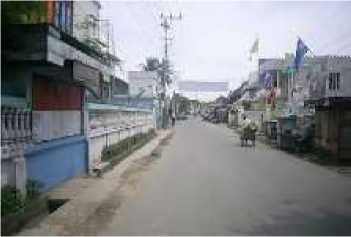
Figure 4: Access to Al Munawar Arab Village
Source: Research Documentation
Table 4 Tourist Interview Data Regarding Accessibility
Source: Data Analysis
Twenty-five out of 30 tourists interviewed stated good accessibility due to the strategic location close to the Ampera Bridge. The rest five tourists mentioned fair accessibility caused by the slum road condition from the 10 Ulu Market to Al Munawar Arab Village due to much garbage not appropriately managed by the government and the unavailability of directions.
A tourist object can be developed if it meets the requirements, including attractions, accessibility, and amenities to attract tourist visits. The interview with several informants obtained more complete information about the strategy for developing the tourist attractions of Al Munawar Arab Village, explained based on three variables: attractions, accessibility, and amenities following the factors it had.
Identification of Internal and External Factors in Al Munawar Arab Village
The data collected during the study disclosed various problems regarding the three basic elements, which were identified into internal and external factors concerning the analysis of tourism attraction development strategies carried out by the managers. The problems analyzed were classified into four dimensions of the SWOT matrix: strengths, weaknesses, opportunities, and threats. These dimensions were combined in a SWOT analysis to obtain alternative solutions to problems in Al Munawar Arab Village. The four dimensions are as follows:
-
a. Attractions
Knowing the strengths of attractions owned by Al Munawar Arab Village through its potential to develop these strengths to compete and survive in the future
-
1) Strengths
Knowing the strengths of the Al Munawar Arab Village to see the
Jurnal Destinasi Pariwisata Vol. 10 No 1, 2022
advantages that other tourist areas have and do not have
-
a) Al Munawar Arab Village has a heritage attraction and a religious attraction.
-
b) It has a historical value of up to nine generations of the original descendants of Al Munawar
-
c) It has the culture of the Arab ethnic community
-
d) It has religious activities in its environment
-
e) It has eight buildings included in the cultural heritage
-
f) It has the concept of welcoming a large number of guests with special food and traditional arts
-
2) Weaknesses
Knowing the weaknesses of Al Munawar Arab Village to take corrective steps
-
a) Lack of availability of supporting
attractions that attract tourists to visit
-
b) The closure of the community to
tourism
-
c) Lack of community service and hospitality
-
d) Lack of human resources in developing tourist areas
-
3) Opportunities
Knowing the opportunities so that the arrangement and tourist attractions in Al Munawar Arab Village will still exist in further development
-
a) The widespread coverage of recreational areas through
television stations and mass media
-
b) The existence of cooperation with schools or universities and travel agencies
-
c) Using the internet for marketing
-
d) Utilization of promotions and assistance in the form of supporting facilities carried out by the South Sumatra Culture and Tourism Office and the Palembang City Tourism Office
-
e) The existence of cooperation with the Indonesian Tour Guide Association (HPI)
-
4) Threats
Knowing the threats in Al
Munawar Arab Village:
-
a) The occurrence of complaints from tourists who visit because the tourist area does not meet the expectations
-
b) Similar tourist areas are more attractive
-
c) Decrease in the rate of tourist visits when there are no events
-
b. Amenities
-
1) Strengths
Knowing the strengths of the amenities of Al Munawar Arab Village through its potential to develop these strengths to compete and survive in the future
-
a) Basic facilities such as public toilets, prayer rooms, and retribution counters are available
-
b) Availability of adequate trash
-
c) Availability of supporting facilities such as pharmacies, health clinics
-
d) Availability of photo spots for tourists
-
e) Clean and quiet area
-
2) Weaknesses
Knowing the weaknesses of the amenities of Al Munawar Arab Village to take corrective steps
-
a) Unavailability of accommodation
in the village area
-
b) Unavailability of souvenir shops
for tourist shopping
-
c) Unavailability of stalls selling
Middle Eastern specialties
-
3) Opportunities
Knowing the opportunities for further development, such as creating a floating jetty and Middle Eastern dining area so that tourists can enjoy their food on the floating dock
-
4) Threats
Knowing the threats of amenities found in Al Munawar Arab Village:
-
a) Lack of availability of supporting attractions that tourists can do
-
b) The level of public awareness of the cleanliness of the Musi River
-
c. Accessibility
-
1) Strengths
Knowing the accessibility strengths of Al Munawar Arab Village through its potential to develop these strengths to compete and survive in the future
-
a) The smooth and good road to the location
-
b) Availability of public transportation, both land and water
Jurnal Destinasi Pariwisata Vol. 10 No 1, 2022
-
2) Weaknesses
Knowing the accessibility weaknesses of Al Munawar Arab Village to take corrective steps
-
a) Insufficient parking space
-
b) No signposts
-
c) Lack of level of cleanliness of the road to the location
-
3) Opportunities
Knowing the opportunities so that the tourist attractions and attractions in Al Munawar Arab Village will still exist in further development
-
a) Strategic location
-
b) The location of the Al Munawar
Arab Village is close to the Palembang icon, the Ampera Bridge
-
4) Threats
Knowing the threats in Al
Munawar Arab Village:
-
a) The more strategic location of competitor tourist areas similar to Al Munawar Arab Village
Visitor Rate of Al Munawar Arab Village
The observations and interviews uncovered that Al Munawar Arab Village had an unstable site visit since it became a tourist village in 2016.
Tourist Visit Data for 2016-2018
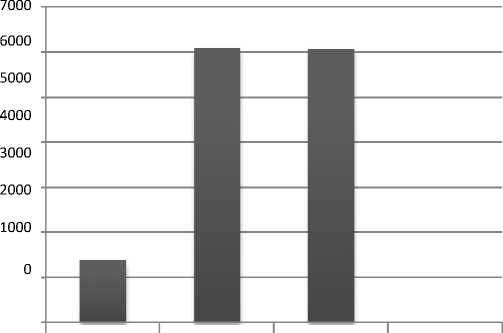
2016 2017 2018
Source: Manager of Al Munawar Arab Village
Based on the graph and tables above, in August 2018, there was a significant increase in tourist visits. It was due to the 2018 Asian Games event held on August 18 – September 2, 2018. Meanwhile, in September 2018, there was a decrease compared to August 2018 and September 2017. Therefore, the instability in tourist visits was a threat to Al Munawar Arab Village in tourism development.
This instability was caused by a large number of tourists only coming at certain times. It was one of the causes of the increase in visits, while the decrease in the number of visits was due to heritage and religious attractions marketed not experiencing significant development, causing this village to be in a stagnant position. If it is not immediately addressed, it will experience a decline at the stage of the destination life cycle, namely being abandoned by tourists. Some of the reasons for Al Munawar Arab Village to have an unstable visitation rate and be in a stagnant position are as follows:
-
a. Lack of Adding Supporting Attractions That Can Attract Tourists To Visit
Supporting attractions are needed to attract tourists to prevent them from being boring with the main attractions because they cannot enjoy all the main attractions, such as traditional arts and Middle Eastern specialties that can only be enjoyed by tourists who come in groups.
The absence of adding new attractions to the tourist attractions of Al Munawar Arab Village was due to the management’s priority not building but improving existing ones. The absence of the development of supporting attractions resulted in saturation. In addition to the absence of significant development, the tourists who came were groups of tourists with product expectations on attractive facilities that could be used for the events they made and low interest for new tourists to come.
-
b. Tourists Did not Want to Make Repeat Visits
Tourists did not want to make repeat visits in the near future because they were satisfied and thoroughly enjoyed the attractions; the only activity they could do was see and enjoy the village atmosphere. The reason tourists did not make repeat visits was no significant changes from year to year and the lack of engaging activities.
Jurnal Destinasi Pariwisata Vol. 10 No 1, 2022
score of 0.380. A floating pier in Al
Attractiveness Development Strategy Using EFAS and IFAS Matrices
-
a. Input Stage
-
1) EFAS (External Factor Analysis Summary) Matrix
The preparation of the EFAS matrix was carried out after identifying external factors in the form of opportunities and threats that would be faced by Al Munawar Arab Village. The preparation of the EFAS matrix was conducted by giving weights and ratings to each external key factor. The weight of each external key was determined by the two respondents who managed the policy, namely the Chair of the Management and the Head of the RT as the Deputy Chair of the Al Munawar Arab Village Management. The EFAS matrix is displayed in Table 5.
Table 5 EFAS Development Environment Matrix
|
No |
(Source: Data |
Analysi |
s) |
Skor(bobot X rating) |
|
The total w |
eighted |
score |
of the | |
|
1 |
external key factors o melalu, stasiun tele™ dan media Al Munawar Arab Vill |
f the att |
ractiven 635 was |
ess of in the |
|
2 |
average position scor that the village, on advantage of extern |
e. This v avera |
alue ind ge, can |
icates take |
|
3 |
avoid threats to the pemasaran |
develo |
pment |
of its |
|
4 |
tourist attractions. calculation present weighted score of weighted score of 1. |
The s an 1.485 150. Th |
EFAS oppor and a |
matrix tunity threat tunity |
|
5 |
score value is grea (Himpunan Pramuwisata Indonesia) |
ter tha |
e oppor n the |
threat |
|
6 |
weighted score, attractiveness gives |
a hiigmhep |
r respo |
that nse to |
|
7 |
the opportunity facto |
r than i |
ts respo |
nse to |
|
8 |
the threat factor. The greater than the thr Palembang yakni Jembatan Ampera |
eoapt proartit |
unity ra g; the |
ting is 0.122 rating |
|
indicates the response rate o |
f the | |||
|
Ancamau Table 5 illus |
y. | |||
|
1 |
critical opportunity fa kawasan wisata tidak sesuai development of the |
ctor for |
the succ veness |
essful of Al |
|
2 |
Munawar Arab Villag |
e is the |
daevvaeillaobp |
ility of |
|
3 |
with a weighted score |
of 0.07 |
7. In co |
ntrast, |
|
4 |
the threat of the mo Kurang ketersediaan atraksi more attractive simi a weighted score of 0. |
st critic ar touri 070. Fur |
al facto st areas |
r was ” with re, the |
|
5 |
biggest opportunity th |
at coul iveness |
be util of this |
ized in |
|
6 |
developing the attrac Lokasi kawasan wisata pesaing was the availability |
of float |
ing doc |
village ks for |
|
further development,” with a we |
ighted | |||
|
Total |
2,635 | |||
Munawar Arab Village could be used to make tourists stay longer. Furthermore, its location on the edge of the Musi River has created a comfortable and calm atmosphere; thus, the managers could use the floating dock to add supporting attractions and facilities such as restaurants that offer Middle Eastern specialties. Hence, it can positively impact the economic progress of the people of this village.
The biggest threat in development was “a similar type of more attractive tourist area” with a weighted score of 0.140. Competition between tourist areas was a challenge for the managers to make improvements to compete with others.
-
2) IFAS (Internal Factor Analysis Summary) Matrix
The preparation of the IFAS matrix was carried out after identifying the internal key factors in the development of tourist attractions of Al Munawar Arab Village, which included strengths and weaknesses. The preparation of the IFAS matrix consisted of rating and weighting. Two respondents determined the weight of each internal key factor: the Chairperson and the Deputy Chair of the Al Munawar Arab Village Management, who was also the RT Head. The IFAS matrix can be seen in Table 6.
Jurnal Destinasi Pariwisata Vol. 10 No 1, 2022
Table 6 IFAS Development Environment Matrix
|
No |
Key Factors for Internal Success |
Weig ht |
Ratin g |
Score (weight X rating) |
|
Strengths | ||||
|
1 |
Al Munawar Arab Village has a heritage attraction and |
0.052 |
3 |
0.156 |
|
2 |
Religious attractions |
0.052 |
3 |
0.156 |
|
3 |
A historical value of up to nine generations of the original descendants of Al Munawar |
0.060 |
3.5 |
0.210 |
|
4 |
Arab culture |
0.052 |
3 |
0.156 |
|
5 |
Religious activities in the village |
0.065 |
4 |
0.260 |
|
6 |
Eight buildings belonging to the cultural heritage |
0.031 |
2 |
0.062 |
|
7 |
The concept of welcoming a large number of guests with Middle Eastern specialties and traditional arts |
0,031 |
2 |
0,062 |
|
8 |
The availability of basic facilities such as public toilets, prayer rooms, and retribution counters |
0,031 |
2 |
0,062 |
|
9 |
The availability of adequate trash |
0,052 |
3 |
0,156 |
|
10 |
The availability supporting facilities such as pharmacies and health clinics |
0.052 |
3 |
0.156 |
|
11 |
The availability of photo spots for tourists |
0.052 |
3 |
0.156 |
|
12 |
Clean and quiet area |
0.031 |
2 |
0.062 |
|
13 |
Smooth and good road to the location |
0.031 |
2 |
0.062 |
|
Total of Strengths |
1.716 | |||
|
Weaknesses | ||||
|
1 |
Lack of supporting attractions that attract tourists to visit |
0.059 |
1,5 |
0.088 |
|
2 |
The closure of the community to tourism |
0.052 |
2 |
0.104 |
|
3 |
Lack of community service and hospitality |
0.031 |
3 |
0.093 |
|
4 |
Lack of human resources in the development of the tourist area |
0.053 |
1 |
0.053 |
|
4 |
No lodging places and souvenir shops in the village area |
0.052 |
2 |
0.104 |
|
5 |
No stalls selling Middle Eastern food |
0.042 |
2 |
0.084 |
|
6 |
Insufficient parking space |
0.031 |
2,5 |
0.077 |
|
7 |
No signposts |
0.031 |
3 |
0.093 |
|
8 |
Lack of cleanliness of the road to the location |
0.044 |
3 |
0.132 |
|
Total Weaknesses |
0.829 | |||
|
Total |
2.545 | |||
(Source: Data Analysis)
The total internal key weighted score is 2.545. It is in the average position, indicating that the functional development of the Al Munawar Arab Village tourist attraction has a solid internal position with a weighted score of 1.716 for strengths and 0.829 for weaknesses. The solid internal position implies that the development of attractiveness can take advantage of its strengths and overcome existing weaknesses. The most crucial factor for developing the attractiveness of the Al Munawar Arab Village, which is strength, is “eight buildings included in the cultural heritage” with a weighted score of 0.065. In contrast, the most crucial factor becoming a weakness is the “lack of supporting attractions that attract tourists to visit,” with a weighted score of 0.059.
The biggest strength in development is “eight buildings included in the cultural heritage,” with a weighted score of 0.260. This heritage potential is the main attraction of Al Munawar Arab Village. Although the attractions in this village are different from those of other tourist objects, their authenticity can have a positive impact in increasing tourist visits and showing the existence of Al Munawar Arab Village because it has interesting heritage potential.
Moreover, the main weakness is the “lack of human resources in the development of the tourist area,” with a weighted score of 0.053. With the strength possessed by Al Munawar Arab Village but not supported by human resources, this condition can lead to the inability of the tourist area to achieve the planned development strategy.
-
b. Matching Stage
The matching stage used the IE matrix. It combined the information obtained at the input stage, namely the EFAS and IFAS matrices. The total weighted scores for EFAS and IFAS are 2.635 and 2.545, respectively, illustrating that the development of the tourist attractions of Al Munawar Arab Village is in the average position (Figure 6).
Jurnal Destinasi Pariwisata Vol. 10 No 1, 2022
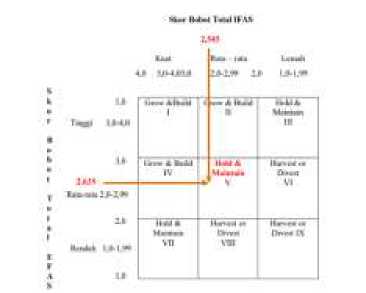
Figure 6: IE Matrix of the IFE Total Weighted Score
(Source: Data Analysis)
The total weighted score indicates that the functional position of developing tourist attractions in Al Munawar Arab Village is in cell V. In cell V, the strategy used is hold and maintain, consisting of market penetration strategies and product development. Market penetration is a strategy to increase market share and can be performed by increasing promotional efforts utilizing developing technology with social media widely used by the public. Furthermore, product development is an effort strategy in improving or modifying attractiveness, for example adding new attractions to the Al Munawar Arab Village by utilizing the floating dock on the edge of the Musi River. However, the IE matrix only provides an overview of the attractiveness development strategy and does not describe the strategies that managers can implement. A more specific strategy is to use the SWOT matrix to discover alternative strategies.
-
c. Alternative Strategy with SWOT Matrix
Based on the opportunities, threats, strengths, and weaknesses obtained from the analysis of the external and internal environment of the attractiveness of Al Munawar Arab Village
Alternative strategies that can be used by the tourist attraction of Al Munawar Arab Village include:
-
1) Attractions
-
a) S-O (Strength-Opportunity) strategy optimizes the internal strengths of the attractiveness of Al Munawar
Arab Village to take advantage of external opportunities, such as:
-
i. Increasing the promotion of attractiveness through
various media, such as electronic, social, and print media, and participating in regional/national
Department of Culture and Tourism exhibitions
-
ii. Optimizing cooperation with
tourism stakeholders
-
iii. Changing the concept of
welcoming guests with traditional arts to a monthly or annual event
-
iv. Increasing cooperation with schools and universities to make the culture in Al
Munawar Arab Village an
extracurricular
activity/mandatory visit to learn the culture
-
b) W-O (Weakness-Opportunity)
strategy minimizes weaknesses and takes advantage of the attractiveness and opportunities of Al Munawar Arab Village, such as:
-
i. Creating new
attractions/innovations to attract many visitors by utilizing the floating dock on the banks of the Musi River by considering the religious value of the community
-
ii. Improving tourism education to the community through counseling and approaches
-
c) S-T (Strength-Threat) strategy uses the strengths of Al Munawar Arab Village to overcome threats, namely:
-
i. Forming a cultural community from the community to form traditional art performances that can be used as routine events
-
ii. Optimizing existing
attractions and involving tourists in tourism activities
-
d) W-T (Weakness-Threat) strategy minimizes weaknesses and avoids threats in Al Munawar Arab Village by:
-
i. Creating attractive supporting attractions following tourist expectations to increase tourist visits when there are no events
-
ii. Conducting tourism
Jurnal Destinasi Pariwisata Vol. 10 No 1, 2022
knowledge training to make the community open to tourism to attract people to be involved in tourism
development
-
2) Amenities
-
a) S-O (Strength-Opportunity) strategy optimizes the internal strengths of the attractiveness of Al Munawar Arab Village to take advantage of external opportunities, namely the provision of retribution counters at the entrance of the waterway.
-
b) W-O (Weakness-Opportunity)
strategy minimizes weaknesses and takes advantage of the attractiveness and opportunities of Al Munawar Arab Village by adding signage facilities to ease tourists to visit.
-
c) S-T (Strength-Threat) strategy utilizes the strengths of Al Munawar Arab Village to overcome threats through:
-
i. Providing access for local
business people to open a Middle Eastern culinary business
-
ii. Increasing public awareness
about the cleanliness of the Musi River as they maintain the cleanliness of the land environment in Al Munawar Arab Village
-
d) W-T (Weakness-Threat) strategy minimizes weaknesses and avoids threats in Al Munawar Arab Village by optimizing limited parking spaces to accommodate all tourist vehicles.
-
3) Accessibility
-
a) S-O (Strength-Opportunity) strategy
optimizes the internal strengths of the attractiveness of Al Munawar Arab Village to take advantage of external opportunities, namely increasing and adding transportation modes to this village.
-
b) W-O (Weakness-Opportunity)
strategy minimizes weaknesses and takes advantage of the attractiveness and opportunities of Kampung Arab Al Munawar; namely, the government pays more attention to environmental cleanliness toward tourism objects.
-
c) S-T (Strength-Threat) strategy uses
the strengths of Al Munawar Arab Village to overcome threats by
improving the cleanliness of the area through collaboration between the Culture and Tourism Office and the Palembang City Sanitation Service.
-
d) W-T (Weakness-Threat) strategy minimizes weaknesses and avoids threats in Al Munawar Arab Village by making signposts on the point road to the village.
The following conclusions were drawn based on the analysis and discussion regarding the strategies for developing tourist attractions of Al Munawar Arab Village:
-
1. Analysis of attractions included the Al Munawar Arab Village, which has heritage and religious attractions, a historical value of up to nine generations of original descendants of Al Munawar, the culture of the Arab ethnic community, religious activities in the village environment, eight buildings belonged to the cultural heritage, and the concept of welcoming guests in large quantities with typical food and traditional arts.
-
2. Analysis of amenities covered basic facilities such as public toilets, prayer rooms, retribution counters, adequate trash cans, supporting facilities such as pharmacies, health clinics, photo spots for tourists, clean and quiet areas.
-
3. Analysis of accessibility included the smooth and good road to the location and the availability of public transportation, both land and water.
-
4. Optimizing the strengths of Al Munawar Arab Village by taking advantage of existing opportunities by increasing the diversity of attractions and developing existing potentials such as floating
docks to attract tourists.
-
5. Improving and adding supporting attractions in Al Munawar Arab Village to meet the needs of tourists to provide satisfaction and comfort for them.
-
6. Taking advantage of opportunities by collaborating with tourism stakeholders and various media to increase tourist visits.
-
7. Utilizing strengths to overcome threats by forming a cultural community from the community to form traditional art performances that can be used as routine events.
-
8. Minimizing weaknesses to avoid threats by holding tourism knowledge training
Jurnal Destinasi Pariwisata Vol. 10 No 1, 2022
to make the community open to tourism to attract people to be involved in tourism development.
Based on the conclusions above, the researchers provide the following suggestions:
-
1. The South Sumatra Provincial Government should provide facilities and infrastructure to support tourism activities such as good parking lots, restoration of eight cultural heritage buildings, floating docks that can be used as attractions like a typical restaurant owned by Al Munawar Arab Village.
-
2. The South Sumatra Provincial Government should improve and develop human resources in the
tourism sector through technical
guidance, training, and comparative studies to other areas with the same destination characteristics as the Al Munawar Arab Village to mobilize and develop the tourism potential.
-
3. The Provincial Government of South Sumatra, through the Department of Culture and Tourism, should further improve assistance and counseling and facilitate places to help people sell their work. The target groups formed, both culinary and craft groups, are expected to be sustainable to provide support for the growth and development of the Al Munawar Arab Village.
-
4. The South Sumatra Provincial Government, through the Department of Culture and Tourism, must create a master plan for the arrangement and development of the Al Munawar Arab Village.
-
5. Through the Sanitation Service, the South Sumatra Provincial Government must pay more attention to the cleanliness and environmental sustainability of the roads around the Al Munawar Arab Village and the Musi River to make tourists feel comfortable.
-
6. The South Sumatra Provincial Government must be able to change the mindset of the community to be more developed and not only work as fishermen to increase human resources.
REFERENCES
Books
Basu, Swastha. 2007. Azaz- Azaz Marketing. Yogyakarta: Liberty
Gusti, I Bagus Rai Utama.2016. Pengantar Industri Pariwisata. Yogyakarta: CV. Budi Utama
Muljadi A.J., 2012, Kepariwisataan dan Perjalanan, PT. Raja Grafindo Persada, Jakarta
Rangkuti, Freddy, 2009. Strategi Promosi yang Kreatif dan Analisis Kasus Integrated Marketing Communication. Jakarta : PT. Gramedia Pustaka Utama.
Siagian, Sondang P. 2015. Manajemen Sumber Daya Manusia. Jakarta: PT BumiAksara.
Yoeti, Oka A. 2005. Pengantar Ilmu Pariwisata. Bandung: ANGKASA
Journals
Biduan, Patris Gisau. 2016. Strategi Pengelolaan Pariwisata Dalam Rangka Peningkatan Pendapatan Asli Daerah di Dinas Kebudayaan dan Pariwisata Kabupaten Ten Kepulauan Sangihe. Jurnal. Vol 1 No 7.
Prayogi, P.A. 2011. Dampak Perkembangan Pariwisata di Objek Wisata Panglipuran. Perhotelan dan Pariwisata, vol 1, No. 1.
Web and Reports
Dinas Komunikasi dan Informatika Kota Palembang. (n.d.). Portal Resmi Pemerintah Kota Palembang. www.palembang.go.id
Kementrian Pendidikan dan Kebudayaan. (n.d.). Sistem Registrasi Nasional Cagar Budaya.
cagarbudaya.kemdikbud.go.id
Pradikta, Angga. 2013. Strategi Pengembangan Objek Wisata Waduk Gunungrowo Indah Dalam Meningkatkan Pendapatan Asali Daerah (PAD) Kabupaten Pati. Skripsi. Semarang: Universitas Negeri Semarang.
Palembang Tourism. (n.d.). All About Palembang Tourism Destination. www.palembang-tourism.com
Sinaga, Supriono. 2010. Potensi dan Pengembangan Objek Wisata Di Kabupaten Tapanuli Tengah. Sumatera Utara: Universitas Sumatera Utara
Undang-Undang Nomor 10 Tahun 2009 Tentang
Kepariwisataan (Tambahan Lembaran Negara Nomor. 4966)
165
Discussion and feedback